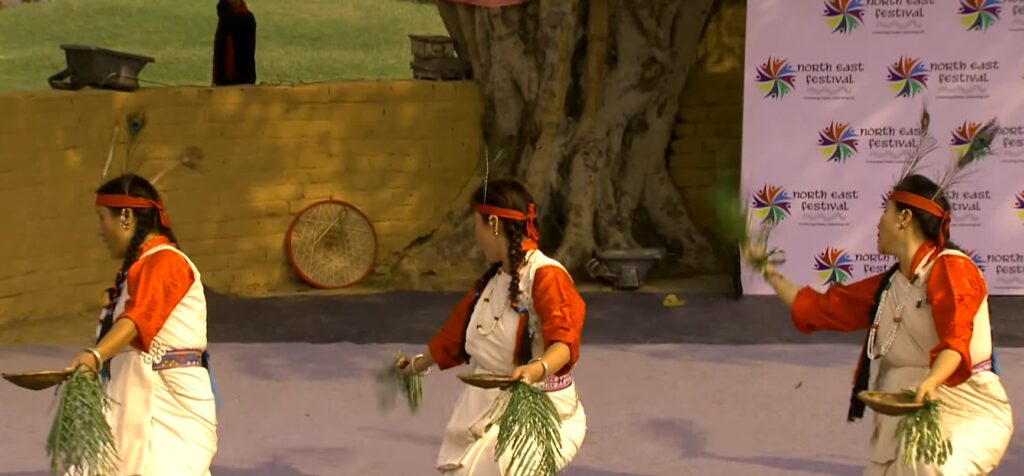Chu Faat dance is a beautiful folk dance of Sikkim. Lepcha tribe performs this dance during the Pang Lhabsol festival.
The word Chu means snow-clad mountains and Faat means to worship. Thus, it means worshipping snow-clad mountains. It is performed on the fifteenth day of the seventh month in the Buddhist Calendar.

Lepcha people consider the five mountains as the source of their survival. They believe that these mountains are their shields and their providers. They display their gratitude through worshipping the mountains. Chu Faat dance is more than just a folk dance to them. It is a ritual through which they worship the giver.
Beauty of Sikkim
Sikkim is a land of beauty. From the beautiful white mountain peaks to the lush green forests, every element of Sikkim is breath-taking. But Sikkim has much more to offer than just the gorgeous scenery. Its rich traditions and heritage will surprise you immensely. Witnessing these folk dances is a heartwarming experience.
Different ethnicities settled in Sikkim bring in different hues to the beautiful state. Every community has its own traditions that decorate it. To feel the real cheer, you should witness the extraordinary performances of folk dances. Most of the tribal communities have a different folk dance.
Lepcha Tribe of Sikkim
One of the oldest ethnicity settled in Sikkim is the Lepcha tribe. They are the oldest and one of the most colorful communities. They have different folk dances for different occasions.
Sikkim lies in the lap of mountains. And Lepcha people are grateful to them for providing them the necessary resources. Lepcha tribe is known for worshipping mountains. Chu Faat dance is their way of showing reverence to the mighty mountains.
Chu Faat Dance Performance
Chu Faat Dance is performed by the Lepchas in the spirit of devotion. You will be moved after seeing the devotion of the dancers and their expressions of surrendering to the divine. It is performed on the auspicious occasion of Pang Lhabsol. Pang Lhabsol festival is the celebration of gratitude. With devotional songs in the background, the Chu Faat dancers worship nature.
Mt Kanchenjunga is the highest peak in Sikkim accompanied by Mt Kabru, Mt Simbrum, Mt Pandim, and Mt Narshing. Lepcha people worship these five mountains through the Chu Faat dance. They thank the mountains for providing them with minerals, salt, medicine, food grains, and sacred text.
Butter lamps and sheaves of bamboo are used as props during the Chu Faat dance. These props symbolize mountains’ gifts and request the mountains to keep bestowing their blessings upon the land of Sikkim. They also enhance the beauty of the dancers.
You will see a group of dancers gracefully taking rounds with their butter lamps and sheaves of green bamboos in the Chu Faat dance performance. They circle the stage in their beautiful costumes.
Worshipping the Mountains
You can catch a sight of the Lepcha dance during the fairs in Sikkim. Fairs are the places where you will find every exotic element in one place. If you want to see how people can worship mountains through a dance form, visit Sikkim during the fairs and festival seasons.
Chu Faat dance is an exceptional dance form of the Lepcha tribe. It will be a once in a lifetime experience to witness for you. Where else can you find people worshiping mountains and playing for a prosperous future through dancing cheerfully with sheaves of green bamboo and butter lamps?

Pingback: Folk Dances of India - Auchitya
Pingback: All Folk Dances of India - Auchitya
Pingback: All Folk Dances of India - Auchitya
Pingback: All Folk Dances of India - Statewise Complete List - Auchitya